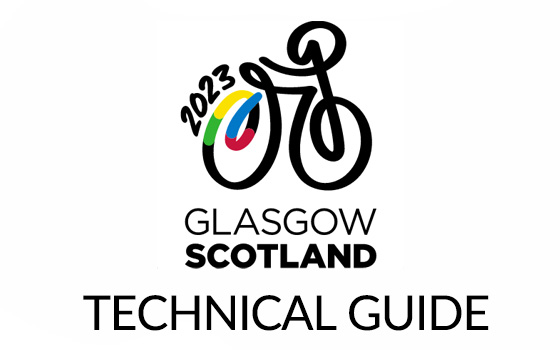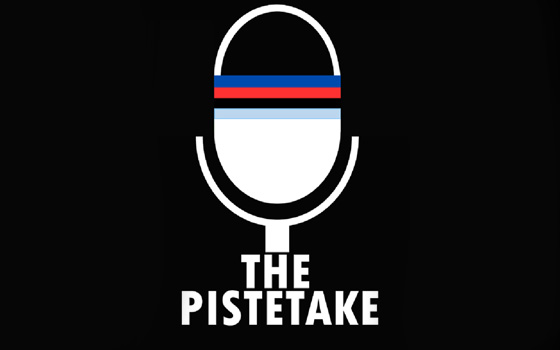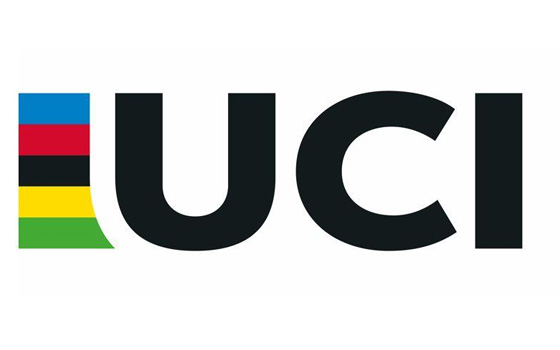Track Cycling Gearing
Questions ranging from, 'How Do I Work Out Gearing?, Crank Size, BCD Calculation, What Gear Do I Have? What Gear is better for each Track Cycling event? to the over complicated subject of Chainline' basically anything and everything you would like to know about Track Cycling Gearing, including Chainsets, Chainrings, Cranks, Sprockets and Chains
..........................................................................................................
How Do I Work Out Gearing?
In order to calculate what gear you are riding in relation to your Chainring and Sprocket size Click Here for our Track Cycling Gear Chart. This Gear Chart can be used to calculate the gear you would achieve which each of your Chainring/Sprocket combinations. Details are also included about Track Cycling Gear Restrictions for Junior and Youth Track Cyclists.
..........................................................................................................
What Gearing is Better for my Event?
Whether you are a Sprinter, Endurance rider or Time-Trial Specialist our guide to Track Cycling Gearing assists you in choosing the best gear for your event, be it the Track Cycling Sprint, Scratch Race, Pursuit, 500m Time Trial or even just your local Track League. Click Here for more information.
..........................................................................................................
What Crank Length is Suitable for Track Cycling?
If ridden correctly on a dedicated Track frame any Crank Length between 165mm and 180mm is suitable for Track Cycling, all these sizes are perfectly safe to use however it is recommended that you only use either 165mm or 170mm as indoor velodromes tend to specify these lengths.
..........................................................................................................
What Crank Length Do I Need?
Despite various leg lengths for different heights, Track Cyclists commonly stick to 165mm or 170mm Crank Lengths. The shorter 165mm Crank Length encourages a greater pedaling efficiency as your pedaling cadence (RPM - Revolutions per Minute) will be higher. This is essential for Track Cycling/Fixed Gear riding as a high cadence is crucial so as a result the vast majority of Track Cyclists use 165mm Cranks.
Generally for Road Cycling, the taller riders opt for larger Crank Lengths to compensate for their height however for Track Cycling even riders over 6ft (1m 82cm) use 165mm due to the advantages of a higher cadence. Occasionally taller riders who are used to riding 175mm Cranks on their Road Bike opt for 170mm Cranks for their Track Bike but this is purely a personal preference.
Sprint Track Cyclists are not advised to go any longer than 165mm, again due to the higher cadence and acceleration benefits this length offers, however Endurance Track Cyclists and Time Trial specialists tend to prefer larger lengths as the greater leverage will assist them in rolling a larger gear
..........................................................................................................
Facts about Track Cycling Chains, Chainline etc
Basically anything and everything you would like to know about Track Cycling Chains, Chainline, Chain Length, Chain Tension everything.... Click Here for more information.
..........................................................................................................
What Bottom Bracket Size Do I Require?
Bottom Brackets come in a variety of sizes, types and tapers, each manufacturer clearly specifies which Bottom Bracket type would be compatible with their Chainsets and details are included in the product descriptions on our website so this makes choosing the right BB easy.
The manufacturer's guidelines will also provide you with the correct chainline based on a standard rear hub width, so it is important to follow these recommendations in terms of size/type, however you can obviously choose a different brand should this be desirable.
The main issue should be with the thread on your frames BB Shell (where the BB connects to the frame), this will either be BSA (British thread) or Italian thread, BSA is 68mm standard whereas Italian is 70mm but again check the manufacturers guidelines for your frame and product descriptions on our website for the frame bb shell type and bb type.
..........................................................................................................
Are JIS and ISO Taper Bottom Brackets Compatible?
Whilst both versions of the square taper Bottom Bracket look the same, the European made ISO square taper spindles are slightly longer, tapering down to a small end than the Japanese Industry Standard (JIS) Bottom Bracket spindles do.
Obviously this does not affect the actual size of the Bottom Bracket, for example a 107mm ISO Bottom Bracket is still the same length as a 107mm JIS Bottom Bracket and the resultant Chainline will still be the same. You will obviously need to ensure you select the correct size of Bottom Bracket (Width) to obtain the correct Chainline regardless of ISO or JIS status.
If you install an ISO Chainset on a JIS Bottom Bracket decrease your Bottom Bracket width by around 4mm, for example purchase a 103mm BB instead of a 107mm to give you the correct chainline.
If you install a JIS Chainset on an ISO Bottom Bracket increase your Bottom Bracket width by around 4mm, for example purchase a 110mm BB instead of a 107mm to give you the correct chainline.
Most Square Taper Bottom Brackets are ISO nowadays, with JIS only featuring on Miche, Ritchey, Shimano and Sugino Standard (not SG75).
Taper matching was important in the past but all modern day/currently manufactured Chainsets are able to cope with either the ISO or JIS standard taper if they require a square taper bottom bracket, so the products are compatible and work just as well together, just adjust your chainline.
..........................................................................................................
What is Chainline?
Many Track Cyclists often get easily confused over Chainline and how to achieve the optimum setting for your fixed gear bicycle. Click Here for our easy to understand guide to Chainline.
..........................................................................................................
Do I Require a Lock Ring?
A fixed-gear or track-bike hub includes special threads for a lockring that tightens in the opposite (counter-clockwise) direction compared with the sprocket. This ensures that the sprocket cannot unscrew when the rider "backpedals" while braking.
If you are a Junior Rider it is illegal not to use a Lock Ring whilst Track Cycling, same goes for all riders not using a lock ring on the road for fixed gear use, however most Police or insurance companies don't understand the complexities of riding without brakes on the road and how a lockring can enable you to brake so it is always advised to have brakes fitted for Fixed Gear Road riding, even if you do not intend to use them.
As for their use on the track for adult riders, you do not need a lock ring as if you are an experienced track rider you will develop the ability to reduce speed without the very dangerous act of violently backpedalling on the Track which lockring use encourages. Not only is this risking injury to yourself, it could also cause you to loose control, cause a crash and/or flat spot your rear tyre in addition to snapping your chain.
..........................................................................................................
How Do I Work Out Gearing?
In order to calculate what gear you are riding in relation to your Chainring and Sprocket size Click Here for our Track Cycling Gear Chart. This Gear Chart can be used to calculate the gear you would achieve which each of your Chainring/Sprocket combinations. Details are also included about Track Cycling Gear Restrictions for Junior and Youth Track Cyclists.
..........................................................................................................
What Gearing is Better for my Event?
Whether you are a Sprinter, Endurance rider or Time-Trial Specialist our guide to Track Cycling Gearing assists you in choosing the best gear for your event, be it the Track Cycling Sprint, Scratch Race, Pursuit, 500m Time Trial or even just your local Track League. Click Here for more information.
..........................................................................................................
What Crank Length is Suitable for Track Cycling?
If ridden correctly on a dedicated Track frame any Crank Length between 165mm and 180mm is suitable for Track Cycling, all these sizes are perfectly safe to use however it is recommended that you only use either 165mm or 170mm as indoor velodromes tend to specify these lengths.
..........................................................................................................
What Crank Length Do I Need?
Despite various leg lengths for different heights, Track Cyclists commonly stick to 165mm or 170mm Crank Lengths. The shorter 165mm Crank Length encourages a greater pedaling efficiency as your pedaling cadence (RPM - Revolutions per Minute) will be higher. This is essential for Track Cycling/Fixed Gear riding as a high cadence is crucial so as a result the vast majority of Track Cyclists use 165mm Cranks.
Generally for Road Cycling, the taller riders opt for larger Crank Lengths to compensate for their height however for Track Cycling even riders over 6ft (1m 82cm) use 165mm due to the advantages of a higher cadence. Occasionally taller riders who are used to riding 175mm Cranks on their Road Bike opt for 170mm Cranks for their Track Bike but this is purely a personal preference.
Sprint Track Cyclists are not advised to go any longer than 165mm, again due to the higher cadence and acceleration benefits this length offers, however Endurance Track Cyclists and Time Trial specialists tend to prefer larger lengths as the greater leverage will assist them in rolling a larger gear
..........................................................................................................
Facts about Track Cycling Chains, Chainline etc
Basically anything and everything you would like to know about Track Cycling Chains, Chainline, Chain Length, Chain Tension everything.... Click Here for more information.
..........................................................................................................
What Bottom Bracket Size Do I Require?
Bottom Brackets come in a variety of sizes, types and tapers, each manufacturer clearly specifies which Bottom Bracket type would be compatible with their Chainsets and details are included in the product descriptions on our website so this makes choosing the right BB easy.
The manufacturer's guidelines will also provide you with the correct chainline based on a standard rear hub width, so it is important to follow these recommendations in terms of size/type, however you can obviously choose a different brand should this be desirable.
The main issue should be with the thread on your frames BB Shell (where the BB connects to the frame), this will either be BSA (British thread) or Italian thread, BSA is 68mm standard whereas Italian is 70mm but again check the manufacturers guidelines for your frame and product descriptions on our website for the frame bb shell type and bb type.
..........................................................................................................
Are JIS and ISO Taper Bottom Brackets Compatible?
Whilst both versions of the square taper Bottom Bracket look the same, the European made ISO square taper spindles are slightly longer, tapering down to a small end than the Japanese Industry Standard (JIS) Bottom Bracket spindles do.
Obviously this does not affect the actual size of the Bottom Bracket, for example a 107mm ISO Bottom Bracket is still the same length as a 107mm JIS Bottom Bracket and the resultant Chainline will still be the same. You will obviously need to ensure you select the correct size of Bottom Bracket (Width) to obtain the correct Chainline regardless of ISO or JIS status.
If you install an ISO Chainset on a JIS Bottom Bracket decrease your Bottom Bracket width by around 4mm, for example purchase a 103mm BB instead of a 107mm to give you the correct chainline.
If you install a JIS Chainset on an ISO Bottom Bracket increase your Bottom Bracket width by around 4mm, for example purchase a 110mm BB instead of a 107mm to give you the correct chainline.
Most Square Taper Bottom Brackets are ISO nowadays, with JIS only featuring on Miche, Ritchey, Shimano and Sugino Standard (not SG75).
Taper matching was important in the past but all modern day/currently manufactured Chainsets are able to cope with either the ISO or JIS standard taper if they require a square taper bottom bracket, so the products are compatible and work just as well together, just adjust your chainline.
..........................................................................................................
What is Chainline?
Many Track Cyclists often get easily confused over Chainline and how to achieve the optimum setting for your fixed gear bicycle. Click Here for our easy to understand guide to Chainline.
..........................................................................................................
Do I Require a Lock Ring?
A fixed-gear or track-bike hub includes special threads for a lockring that tightens in the opposite (counter-clockwise) direction compared with the sprocket. This ensures that the sprocket cannot unscrew when the rider "backpedals" while braking.
If you are a Junior Rider it is illegal not to use a Lock Ring whilst Track Cycling, same goes for all riders not using a lock ring on the road for fixed gear use, however most Police or insurance companies don't understand the complexities of riding without brakes on the road and how a lockring can enable you to brake so it is always advised to have brakes fitted for Fixed Gear Road riding, even if you do not intend to use them.
As for their use on the track for adult riders, you do not need a lock ring as if you are an experienced track rider you will develop the ability to reduce speed without the very dangerous act of violently backpedalling on the Track which lockring use encourages. Not only is this risking injury to yourself, it could also cause you to loose control, cause a crash and/or flat spot your rear tyre in addition to snapping your chain.



